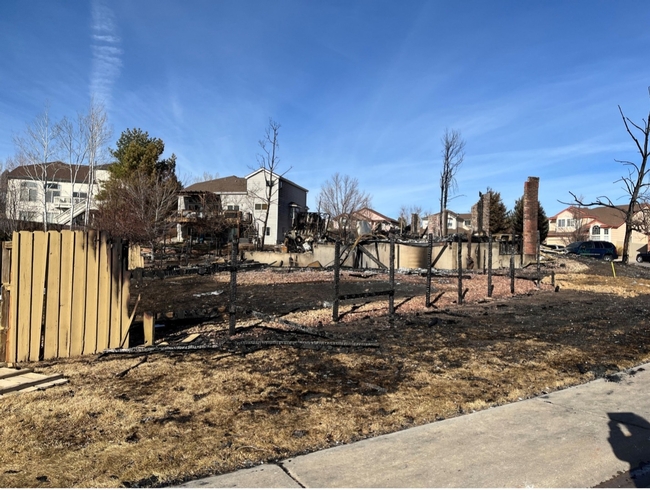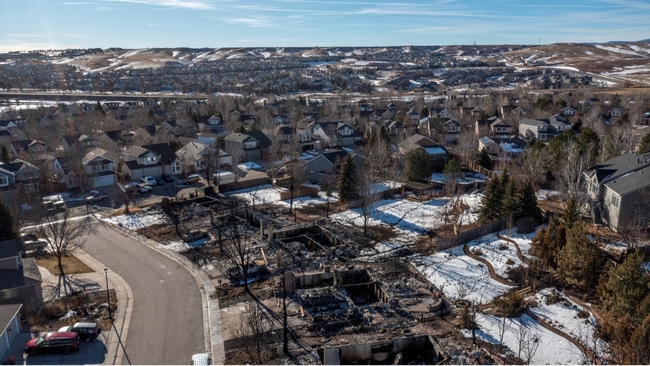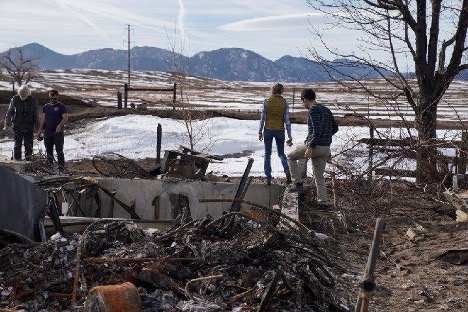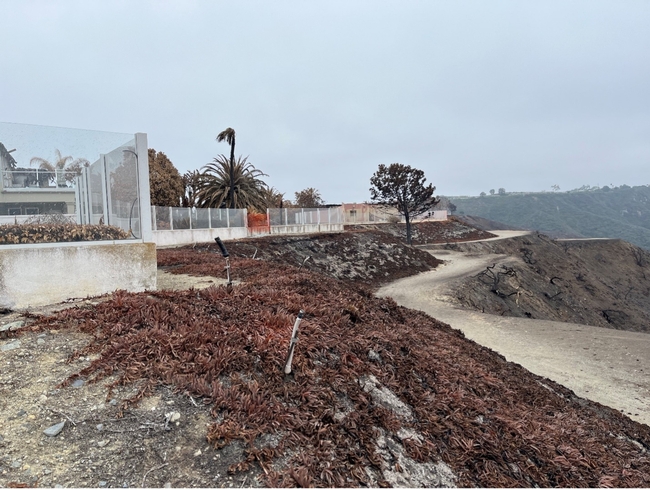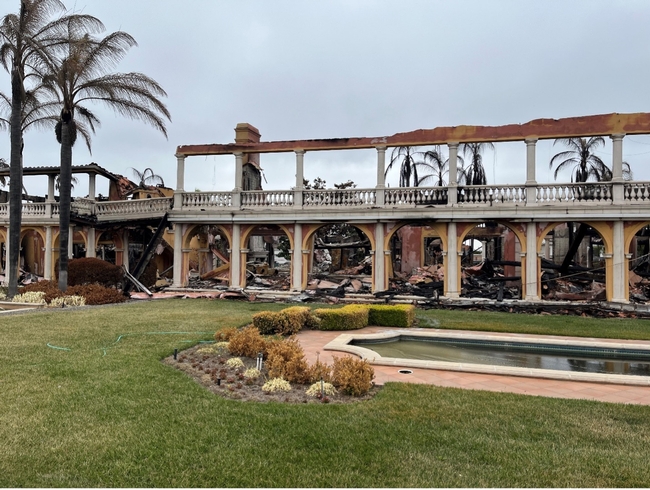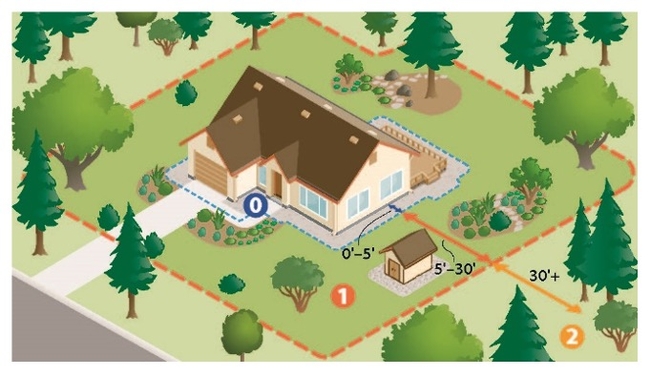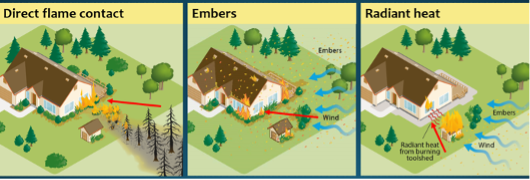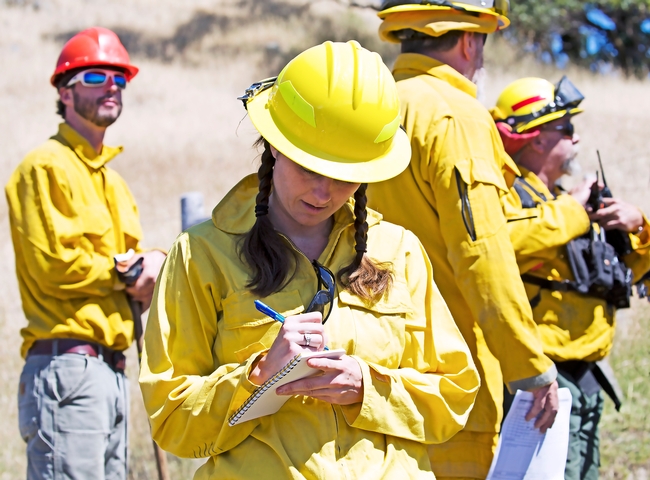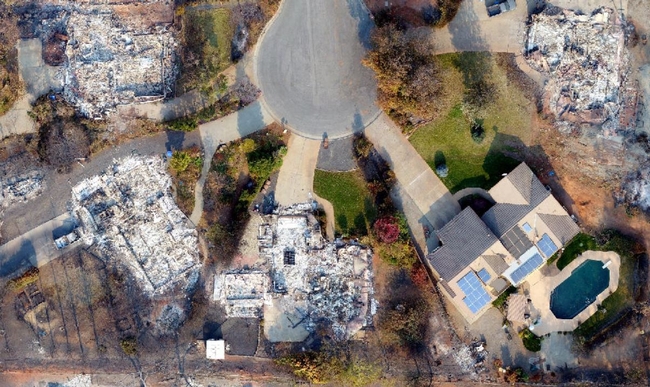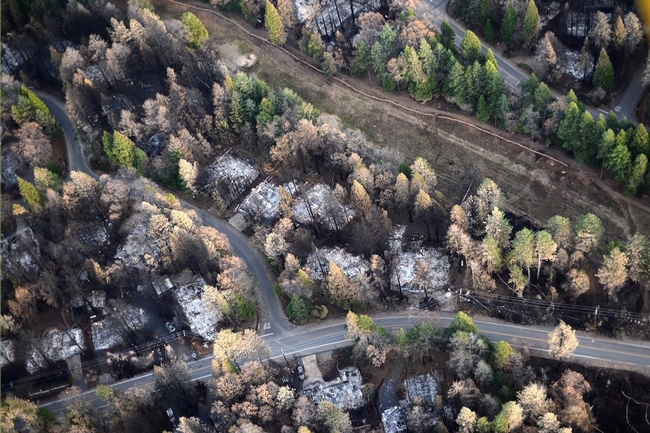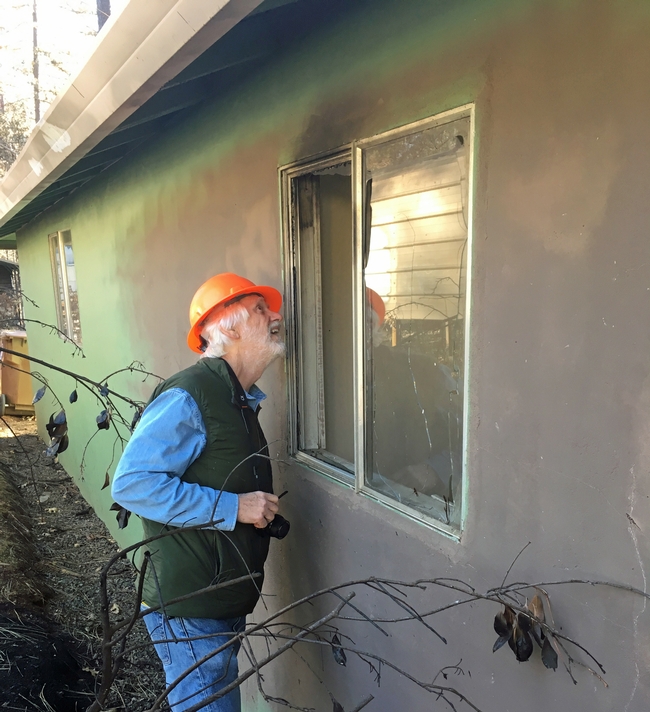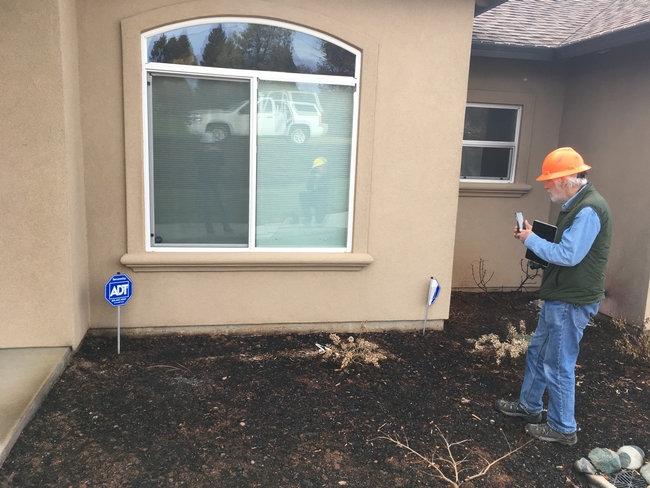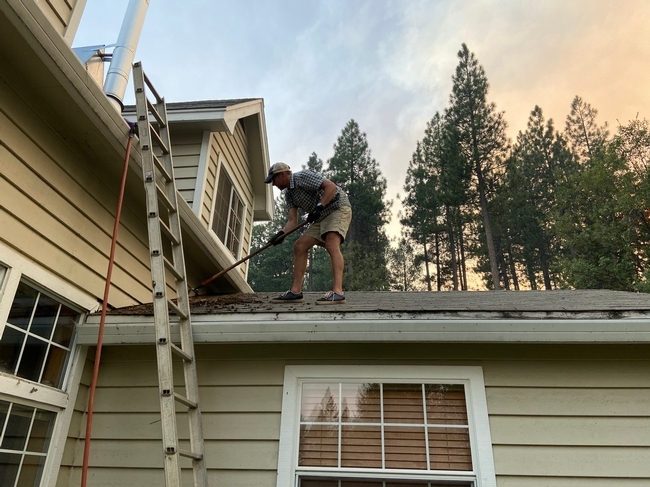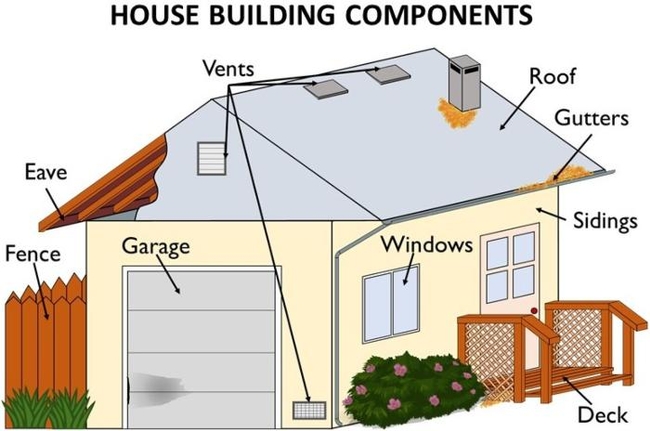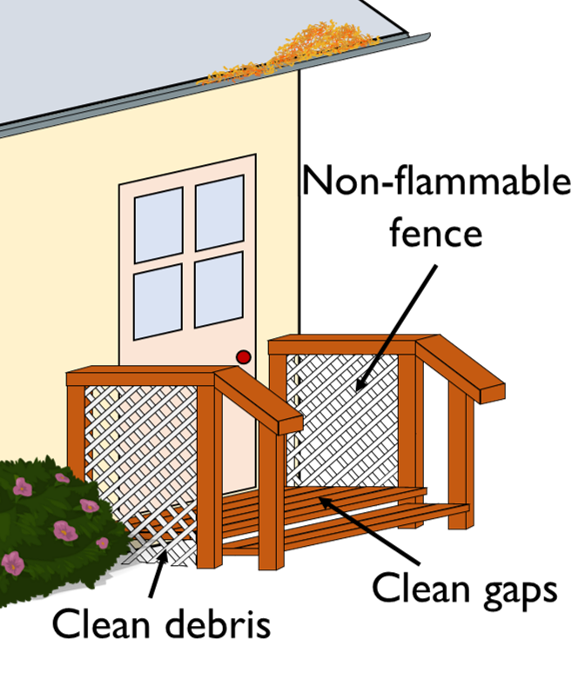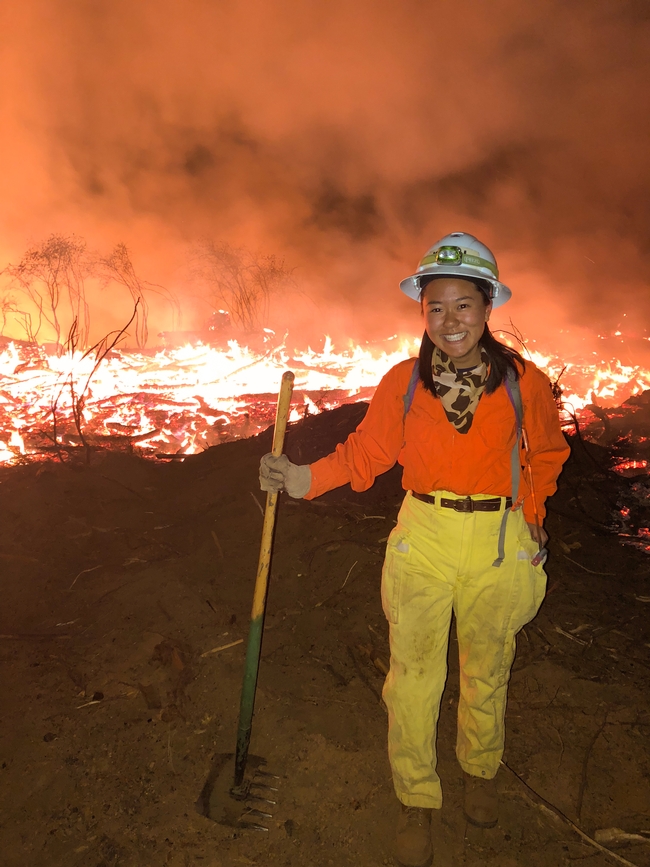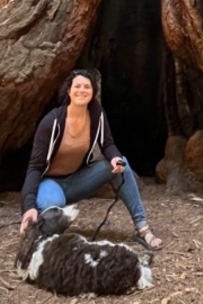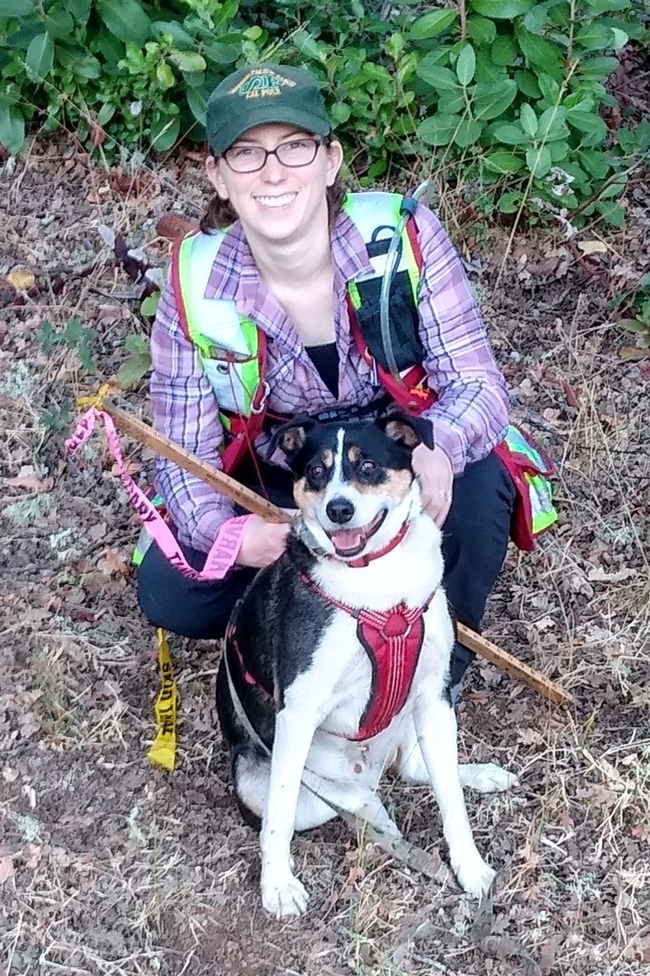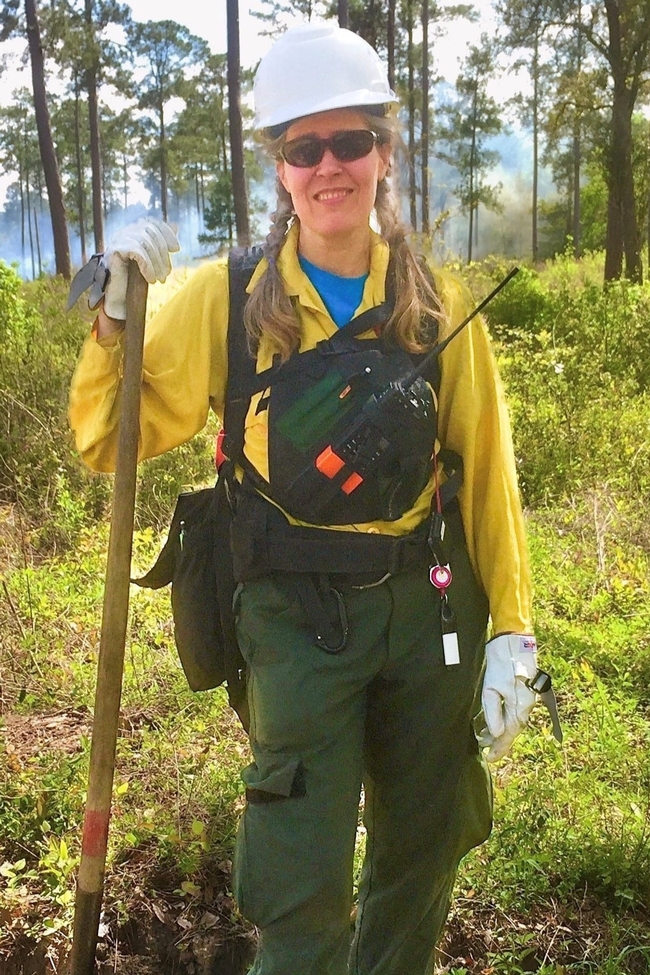Posts Tagged: wildfire
Lessons from the 2022 wildfire season offer hope
As we prepare for wildfire in 2023, we reflect on what we learned from the 2022 fire season. From a statistical point of view, fewer acres were burned, and fortunately, fewer lives and homes were lost. Less than 400,000 acres were burned, a sevenfold reduction from 2021. On a similar note, less than 1,000 structures were destroyed by wildfire, representing a fourfold reduction from 2021. Those are significant changes, but as I reflect on my experience studying the vulnerabilities in our communities to wildfire, sadly, I need to share that “we're not out of the woods yet,” so to speak, but the formula for success is becoming clearer.
Recently, I worked with great colleagues to evaluate factors contributing to home loss in the town of Paradise during the Camp Fire. In that experience, we learned that the condition of the community of nearby homes has a significant impact on an individual building's survival. In our research, we found that the strongest predictor of loss was attributed to the distance to the nearest destroyed structure, especially if the destroyed building was within 50 feet. That means if a home succumbs to wildfire, it affects the survival of neighboring homes. That lens helped me look for patterns in 2022's wildfire season.
Fences create a wildfire path
I started 2022 in Boulder, Colorado, at the Marshall Fire. Many may remember that on Dec. 30, 2021, a wildfire challenged our views of when the fire season is deadliest. We were ready to welcome the new year and wildfire was furthest from our minds when several fires ignited during a significant wind event (the cause has still yet to be determined), and within minutes the fire spread to several communities around Boulder. Propelled by gusts of 115 mph, the fire burned 6,000 acres, and when it finally was suppressed by a snowstorm 12 hours later, it left behind 1,084 destroyed structures, including a hotel, a Target store and one shopping center. In January, two weeks after the fire started, I was privileged to accompany scientists from the Insurance Institute for Business and Home Safety (https://ibhs.org/risk-research/wildfire/ ) and UC ANR's Steve Quarles, UC Cooperative Extension advisor emeritus, to search for clues to help understand why some buildings succumbed and others did not.
The Marshall Fire burned on the east side of the Rocky Mountains, very different from the forested community of Paradise, where visual privacy between homes can be met through trees. During my visit, I saw that the Marshall Fire quickly spread through the region's grasslands and then to homes via a spaghetti of wooden fences.
These fences offer these communities privacy and backyard protections for kids and pets, but also create a pathway for wildfire to travel between homes. More specifically, the burning grass came into contact with debris and leaves caught at the base of wooden fences, igniting the fence and creating a pathway to bring fire directly to the house. The burning fence ignited surrounding dry ornamental plants and traveled down the fence line bringing flames directly to the house. Once a home ignited, the winds whipped embers from the burning homes to adjacent homes.
I believe that if the fences been upgraded with a 5-foot section of noncombustible materials or a metal gate attaching the fences to the houses, a burning fence would have been much less likely to damage the home.
Fuel reduction works
Fast forwarding to May, another fire challenged California's view of the fire season. The Coastal Fire burned on May 11, 2022, in Laguna Niguel near the California coast in Orange County. It was a small fire (200 acres) that burned through dense brush known as chaparral and raced up steep slopes to a network of homes that had been managed to withstand wildfire. In the end, 20 homes were lost. During my visit with my colleague Luca Carmignani, UC Cooperative Extension area fire advisor, we observed that the situation could have been much worse.
The community had completed a significant amount of fuel reduction and prevented flames from directly contacting the homes. This is a huge success that should be celebrated. Their weakness, however, was not preparing for the ember cast that came from the burning chaparral. These homes exhibited the classic effect of having the fire burn to the edge of the community and stop. Then 30 minutes later, fire personnel and the media observed puffs of smoke emanating from the roofs of the homes. So, what was the cause?
Embers found ways inside homes
Embers had penetrated the attic vents, found combustible materials, and fire ignited inside these houses. Fortunately, fire personnel were able to contain the damage to the homes at the exposed edge of the canyon rim and prevent a widespread home-to-home tragedy. Had these communities upgraded their vents to resist embers, the odds that these homes would have survived would have greatly increased.
Defensible space adds protection
The Oak Fire in Mariposa County in July provided another interesting lesson. The fire burned 20,000 acres and took 182 structures. A colleague from CAL FIRE shared that homes that had failed their defensible space inspection before the fire were six times more likely to be lost in the Oak Fire.
Defensible space is the modification and reduction of combustible materials and vegetation around a home. This required fuel modification provides a safe place for fire personnel to safely stage to address the approaching wildfire, and it also protects the house from catching fire. We all know this is a good practice; perhaps this data can help underscore its importance in building protection.
Wildfire preparation makes a difference
So, what did 2022 tell us? Simply, the details of wildfire preparation matter. Homes are destroyed by one or a combination of exposures: direct flame touching the building, embers penetrating a building through open windows or porous vents, or the radiant heat from the combustion of nearby fuels or homes leading to window breakage.
As Californians, we must prepare for all three types of exposures. We need to break the pathways of continuity from fences and vegetation to our structures. We need to harden our structures to resist heat and embers. We need to reduce fuels around our homes through the creation of defensible space.
To me, home loss to wildfire is predictable; however, the solutions to reducing home loss are within our sights and, with some tenacity and attention to the details, are within our capacities.
UCCE seeks statewide input to develop future wildfire programs
University of California Cooperative Extension has recently expanded their team of fire advisors and staff. This new group of UCCE fire professionals is interested in learning about the concerns of the communities that UCCE serves, as well as the natural resource professionals already working to address these issues.
Results from this survey will enhance the team's ability to partner with residents, landowners, agencies, academics, and other organizations to reduce California's vulnerability to wildfires. These new advisors will also share survey results with UCCE colleagues throughout the state, who already provide important fire-related programming across diverse landscapes and audiences.
"Wildfires will continue to affect all Californians, either directly or indirectly," said Katie Low, UCCE statewide fire coordinator. "It's invaluable to have the input of as many people as possible to guide the development of our wildfire-related extension programs, so that they can provide the most useful resources and information to communities across California."
The survey asks questions about topics such as:
- Gaps within existing educational programming and resources
- Challenges community members are facing in addressing wildfire risk
- Empowerment of communities to make property management decisions and prepare for wildfire
- Acceptability of prescribed fire and other fuels treatments
By participating in this study, you can choose to enter a drawing to win one of fifty $20 VISA gift cards.
To take the online survey, please visit https://bit.ly/UCCE_Fire_Survey.
This research is being led by a team of new UCCE fire advisors and staff. If you have any questions about this survey, please contact the fire/forestry professionals involved in this survey effort:
- Luca Carmignani, UCCE fire advisor for Los Angeles, Orange, Riverside, and San Diego counties, carmignani@ucanr.edu
- Alison Deak, UCCE fire advisor for Fresno, Madera, and Mariposa counties, aldeak@ucanr.edu
- Katie Low, UCCE fire academic coordinator for Nevada and Placer counties, katlow@ucanr.edu
- Barb Satink Wolfson, UCCE fire advisor for Monterey, San Benito, Santa Clara, and Santa Cruz counties, bsatinkwolfson@ucanr.edu
- Ryan Tompkins, UCCE forestry advisor for Plumas, Sierra, and Lassen counties, retompkins@ucanr.edu
For more information about wildfire-related programming from University of California Cooperative Extension, please visit https://ucanr.edu/sites/fire/ or the Facebook page https://bit.ly/fireSolutions.
Can homes be designed to withstand wildfire?
[This story was originally published Oct. 4, 2021, and updated Dec. 21, 2022]
In 2018, the Camp Fire destroyed nearly 19,000 structures in Northern California, including most of the town of Paradise. The structures left standing by the conflagration provided researchers an opportunity to investigate how housing arrangement – such as the size of the lot, the distance to a neighboring home, and surrounding vegetation – influenced which homes survived. They also looked at whether changes to the California Building Code in 2008, through the addition of Chapter 7A, improved the chances of homes built in the wildland-urban interface to withstand wildfire.
Both housing arrangement and surrounding vegetation likely influenced the survival of homes during an extreme wildfire, according to new research from the USDA Forest Service and the University of California Agriculture and Natural Resources analyzing the Camp Fire aftermath, which will be published Oct. 3 in the journal Fire Ecology.
“Our team found a reason for hope and information that can help Californians, building contractors and policymakers better prepare for future fires,” said co-author Yana Valachovic, University of California Cooperative Extension forest advisor.
The 2008 code, which applied to the city of Paradise, requires the installation of vents that resist flames and embers and other elements that help harden a home to wildfire. This chapter of the California Building Code added requirements for construction materials to California's existing two-zone fuel and vegetation modification guidance, known as “defensible space,” which applies to the vegetation and fuels out to 100 feet from a home.
The researchers found that the age of the home was a significant factor in predicting survival. But the key year wasn't 2008. Improvements in performance happened earlier. Only 11% of single-family homes built in or before 1996 survived, compared with 40% for homes built after 1996. Older homes were, on average, placed closer together and had more overstory tree growth near the home. Overall, the greater the distance between structures, the lower the likelihood of a home being destroyed by the Camp Fire. And the less overstory tree canopy cover, the higher the likelihood of a home surviving.
During a wildfire, structures can be threatened by the flaming front of the fire and by embers that are lofted ahead of the fire and land on fuels such as vegetation or mulch next to the house, igniting new fires. Embers can also enter homes through open windows or vents. Heat radiating from adjacent burning buildings or vegetation can also impact home survival.
In 2022, during a visit to Laguna Niguel after the Coastal Fire, Valachovic saw that defensible space had prevented flames from reaching homes. However, some houses had burned from the inside out after embers penetrated attic vents and ignited combustible materials.
“Despite the unpredictable nature of wildfire, strong associations with home arrangement and overstory vegetation cover indicate home survival is at least somewhat predictable,” said lead author Eric Knapp of the USDA Forest Service. “The silver lining is that this also suggests steps can be taken to substantially improve the odds of homes surviving a wildfire.”
One of the biggest drivers of home loss in the Camp Fire was the heat radiating from the large number of structures that burned. Over 73% of homes destroyed in Paradise had a structure burn within 59 feet. The distance to the nearest destroyed structure or total number of destroyed structures within 328 feet was a primary predictor of home loss.
“Exposure to the heat of a nearby burning structure can break glass in a window, for example. Once the glass is broken, embers or flames can enter the house,” said co-author Steve Quarles, emeritus UC Cooperative Extension advisor and retired chief scientist for the Insurance Institute for Building & Home Safety.
This finding suggests that denser developments, built to the highest standards, may protect subdivisions against radiant heat from a vegetation fire, but density may become a detriment once buildings ignite and radiant heat loads increase as well as the increased potential for direct flame contact.
“This research suggests a strong neighborhood effect, where the condition and proximity of an outbuilding or a neighbor's home can have a significant influence on a building's survival given the radiant heat exposure from a neighboring building burning,” Valachovic said.
Tree canopy cover was also associated with home loss, with a higher probability of home survival where tree cover was moderate or less.
“Trees provide shade, which is important where summers are hot. But to have the amenities trees provide without undue fire hazard, the key is to clean up the leaves and dead wood trees produce,” said Knapp. “This includes keeping roofs, gutters, garden beds adjacent to the structure and spaces under attached decks, free of leaves.”
The researchers detected no significant increase in survival for homes built from 2008 to 2018, under the new building code, compared to homes constructed during an equal time period, 1997 to 2007, immediately preceding the adoption of the new code. Houses built during the last two decades resisted wildfire better than older homes, indicating an overall improvement in common construction standards and the performance of building materials.
“It is important for Californians to understand that homes and immediate surroundings need to be well-maintained to resist embers, survive extended radiant heat exposures and minimize direct flame contact,” Quarles said. “Fortunately, all building codes get better with time and Chapter 7A is no exception – Californians have benefited from it. California's Building Code is reviewed every three years, and it is evolving as new knowledge becomes available based on research and post-fire assessments.”
To enhance wildfire protection at the neighborhood scale, the researchers recommend coordinating efforts with neighbors.
“Because ember ignition of one house can put neighboring houses at risk, it is critical that fuel reduction happens at a community scale. Living with fire means doing all things possible to prevent one's house from catching fire,” said Valachovic.
There are simple actions that homeowners can take to protect their homes.
“From retrofitting with vents that resist ember entry or using tempered glass windows, to the simple things, like not placing bark mulch or woody plants next to homes, and using gutter guards to minimize leaf and needle accumulation in gutters, all will improve the chance of home survival,” Quarles noted. “It is a matter of how we choose to live in this environment.”
“Housing arrangement and vegetation factors associated with single-family home survival in the 2018 Camp Fire, California” by Knapp, Valachovic, Quarles and Nels G. Johnson is published in the journal Fire Ecology at https://fireecology.springeropen.com/articles/10.1186/s42408-021-00117-0.
For more information:
- Steps for hardening houses against wildfire can also be found at the Fire in California website: https://ucanr.edu/sites/fire/Prepare/Building.
- Reducing the vulnerability to buildings to wildfire: vegetation and landscape guidance https://anrcatalog.ucanr.edu/pdf/8695.pdf
Five things you can do this weekend to help protect your home from wildfire
Despite recent rains, fire remains a danger across California, as there's still plenty of time this fall for grass, woody debris and other flammable material to become dry and ignite.
“The smaller the fuels – pine needles, grass, and small twigs – the faster they can dry out, meaning they will be ready to burn again a few days or weeks after a large rainstorm,” said Susie Kocher, a UC Cooperative Extension forestry and natural resources advisor for the Central Sierra, urging residents to take steps to prevent or limit potential fire damage.
When it comes to “home hardening” and essential wildfire preparations in this age of drought and climate change, not every project requires a bank-breaking budget and an army of contractors.
There are small – but significant – home and landscaping improvements that most people can complete by themselves during a single weekend, with a quick run to the hardware store and some basic planning and safety precautions.
“There are a lot of factors that play into your home's vulnerability to ignition; small changes and upgrades can help reduce some of that risk for people living in high wildfire risk areas,” Kocher explained. “The bigger projects like replacing windows and roofs are very important, but there are definitely smaller projects that people can tackle right away at lower cost that also reduce risk. The main goal of these actions is to reduce the risk that wildfire embers can ignite your home.”
Kocher recommends these five measures as simple but crucial ways to bolster your home's wildfire resiliency.
Clean debris from your roof. Because of its expansive surface, the roof is the most susceptible area of your house to embers. Removing accumulated leaves and needles is especially important if you have a “complex roof” with dormers or other elements – that's where embers gather, too, and could come in contact with flammable siding. (And while you're up there, give those gutters a good swabbing.) Learn more about protecting your roof and gutters.
Install metal flashing in vulnerable spots. Replacing all your siding with noncombustible material can be pricey, but a more manageable task would be adding corrosion-resistant metal flashing to select areas: roof-to-wall intersections, the place where the chimney comes out of the roof, and the edge where the deck meets the house. Learn other ways to shore up your siding.
Remove debris from between the boards of your deck and fence. Embers can ignite leaves and needles stuck between the boards, so be sure to keep those gaps clean and clear. Learn additional steps to harden your deck and prepare your fence.
Take out all vegetation (alive or dead) within five feet of your home. Creating defensible space immediately next to your home is a top priority, so be sure there's nothing combustible within this “Zone Zero.” Plants, mulch, woodpiles, wicker furniture or anything that can catch fire should be removed. Learn what to do in the other “zones” as you move farther from your home.
Inspect vents and upgrade to finer mesh screens. Install or swap in noncombustible, corrosion-resistant metal mesh screening that is at least 1/8” (1/16” would be even better but requires more frequent maintenance). These screens help prevent embers from entering your attic and crawl space. In addition, put together some vent covers that can be deployed if you have time before a wildfire arrives. Learn other ways to reduce vulnerability of vents.
For more in-depth explanations and next steps, Kocher suggests visiting the UC ANR wildfire website (https://ucanr.edu/sites/fire/Prepare) and reviewing this home retrofit guide (https://bit.ly/3RaL54u).
New advisors share crucial wildfire expertise
UC ANR hires more fire advisors to address growing threat to California communities
Bringing more expertise to more places across the state, University of California Agriculture and Natural Resources continues to hire fire advisors to help communities prepare for one of the most devastating climate-fueled threats.
With wildfires a constant danger as drought grips California, five highly skilled UC Cooperative Extension experts have joined the organization since early May:
- Katie Low, statewide fire coordinator (and also serving Nevada and Placer counties)
- Alison Deak, fire advisor serving Mariposa, Fresno and Madera counties
- Tori Norville, fire advisor serving Sonoma, Napa and Marin counties
- Barb Satink Wolfson, fire advisor serving Monterey, San Benito, Santa Clara and Santa Cruz counties
- Luca Carmignani, fire advisor serving Los Angeles and Orange counties
These positions – as well as other recent additions in agriculture and natural resources fields – are made possible by California's commitment, as reflected in the state budget, to improve the lives of residents in the face of a changing climate.
This robust team of fire experts provide broad knowledge and practical advice on a wide range of topics, including fire hazard mitigation, fire ecology, prescribed fire, wildland fire research, forest and wildlife management, and climate change effects.
Although their specific areas of expertise vary, all the new fire advisors are dedicated to helping residents and community groups across California become more fire-aware, adapted and resilient. They share vital information on how Californians can prepare homes, landscapes and property for wildfire.
Katie Low
Katie Low, who began as the University of California Cooperative Extension statewide fire coordinator on Sept. 1, will fulfill two important functions for UC Agriculture and Natural Resources' team of fire experts.
First, she will coordinate and partner with UCCE fire advisors throughout California to develop and deliver wildfire-related science and outreach materials for a wide range of communities across the state. Low said encouraging diversity in the network of fire experts and engaged communities will be crucial.
“One of my goals is to help build and maintain a diverse and inclusive community of fire and natural resource professionals,” she said.
Based at the UCCE office in Auburn, Low also will collaborate with local natural resource professionals and residents in Nevada and Placer counties on projects that bolster community and ecosystem resilience to wildfire and climate change.
“I look forward to working with community groups, land managers and scientists to implement viable fire-resilient management strategies for ecosystems in the region and statewide,” Low said.
Equipped with bachelor's degrees in geography and ecosystems management and forestry, as well as a master's in forestry, all from UC Berkeley, Low brings to UC ANR a wealth of knowledge and a variety of experience.
As a fire and forest ecologist, she studied the impacts of fuels-reduction and forest-restoration treatments on Sierra Nevada mixed-conifer forests. Low also worked as operations coordinator for the California Outdoor Engagement Coalition, and as a forestry aide for California Department of Forestry and Fire Protection's Forest Biometrics Program.
Low can be reached at 530-889-7385 and katlow@ucanr.edu; follow her on Twitter @lowseverityfire.
Alison Deak
Alison Deak joined UC Cooperative Extension in August 2022 as a fire advisor for Mariposa, Fresno and Madera counties. Since she began work, Deak has been focused on conducting a needs assessment and building rapport with community leaders.
Her role as fire advisor will include promoting the use of prescribed fire to help restore fire adapted landscapes. She will also prioritize community education, applied research and partnership building efforts that are based on scientifically informed ways to help communities mitigate, prepare for, and recover from wildfire.
Originally from northeast Ohio where there are no wildfires according to Deak, it was not until she moved to Colorado for college that she learned of their impact.
When the 2012 Waldo Canyon Fire occurred, Deak felt like her playground was burning down so she acted. She began volunteering with the wildfire recovery effort and her career into fire science took off from there.
Deak earned a bachelor's in geography and environmental studies from the University of Colorado in Colorado Springs and master's degrees in geography and nonprofit management from the University of Oregon.
Before moving to California and joining UC ANR, Deak worked as a wildland firefighter with the United States Forest Service and Bureau of Land Management.
When asked what she is looking forward to most, Deak shared that she is passionate about increasing diversity in the fire science field and, particularly, empowering more women to join. She is eager to help community members prepare for wildfire and mitigate fire risk in a safe and competent manner.
Deak is located at the UC Cooperative Extension office in Mariposa County and can be reached at aldeak@ucanr.edu.
Tori Norville
Tori Norville started on Aug. 1 as the new UC Cooperative Extension fire advisor for Sonoma, Napa and Marin counties.
In this capacity, Norville will work with residents and organizations within the wildland-urban interface to encourage and cultivate fire-adapted communities. She aims to provide education and outreach on home hardening, defensible space and the importance of forest and fuel management on the landscape.
While pursuing her bachelor's degree in forestry and natural resources at Cal Poly San Luis Obispo, Norville became interested in “disturbance ecology” – how factors such as disease, insects and fire affect landscapes and environments.
“Many of the forest health problems we are seeing are stemming from a lack of disturbance, which traditionally was fire,” Norville said.
Her understanding of fire and its effects deepened during her master's degree studies in forestry science (also at Cal Poly SLO), as well as through her seven years with CAL FIRE at the Jackson Demonstration State Forest in Mendocino County. She worked as the Registered Professional Forester for its Timber Sales Program, and then the Research and Demonstration Program.
Norville's firsthand experiences from the past few fire seasons have helped shape her goals and approach. She hopes to “work holistically with disturbances” – specifically fire – on the landscape to foster healthy forests and ecosystems that are adaptable and resilient, while also researching the environmental and social aspects of fuel-reduction projects and prescribed fire.
“Hopefully, I can begin to change the perception of fire from something we need to fear, to something we respect,” she said.
Norville, based at the UCCE office in Santa Rosa in Sonoma County, can be reached at trnorville@ucanr.edu.
Barb Satink Wolfson
Barb Satink Wolfson began in her role as UC Cooperative Extension fire advisor for Monterey, San Benito, Santa Clara and Santa Cruz counties on June 30.
Her primary responsibilities include wildland fire-related research and outreach for the Central Coast region, while building trust, strong partnerships and collaborative relationships within both professional and non-professional communities.
Satink Wolfson earned her B.S. and M.S. in forestry from Northern Arizona University, and brings to UC ANR more than 20 years of fire-research and outreach experience in Arizona. Her favorite job, though, was working as a backcountry ranger in Yosemite National Park during her undergraduate years.
In her new role, Satink Wolfson hopes to address some of the questions behind the use of prescribed fire in a variety of ecosystems (such as coastal prairies and oak woodlands), and help all Central Coast communities build resilience to wildland fire so residents can live safely within fire-adapted landscapes.
Satink Wolfson, based at the UCCE office in Hollister, can be reached at bsatinkwolfson@ucanr.edu.
Luca Carmignani
Luca Carmignani joined UCCE as a fire advisor for Orange and Los Angeles counties May 2. His research interests include image analysis, computer programming and scientific outreach.
Prior to joining UC ANR, Carmignani was a postdoctoral researcher in the Berkeley Fire Research Lab at UC Berkeley. His research has focused on fire and combustion applications, from wildland fires to material flammability.
He earned his Ph.D. in engineering sciences from the joint doctoral program between UC San Diego and San Diego State University after obtaining his bachelor's and master's degrees in aerospace engineering from the University of Pisa in Italy.
Carmignani is based at South Coast Research and Extension Center in Irvine and can be reached at carmignani@ucanr.edu and (949) 237-2956. Follow him on Twitter @l_carmignani.


